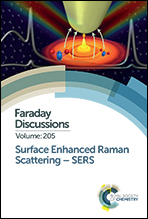Fast and reproducible iSERS microscopy of single HER2-positive breast cancer cells using gold nanostars as SERS nanotags
Abstract
Speed is often a bottleneck in conventional Raman microscopy on biological specimens. In immuno-Raman microspectroscopy, or for short iSERS microscopy, the acquisition times per pixel have been reduced by more than one order of magnitude over the past decade since its proof of concept. Typically rather high laser power densities are employed with the intention of compensating for the shorter acquisition times, without checking the reproducibility of the results in repeated experiments on the same sample. Here, we systematically analyze this aspect at the single-cell level since it forms the basis of quantification and is very important for reinspection of the same specimen. Specifically, we investigate experimentally the role of the laser power density in conjunction with the acquisition times per pixel in a series of repeated iSERS experiments on the same single cell overexpressing the breast cancer tumor marker human epidermal growth factor receptor 2 (HER2). Confocal iSERS mapping experiments were guided by wide-field fluorescence microscopy for selecting the regions of interest. We demonstrate that the combination of ca. a 1–2 mW laser power (40× objective, NA 0.6), 50 ms acquisition time per pixel and a high EM-CCD signal gain yields highly reproducible iSERS images in a series of four repeated experiments on the same single cell. In contrast, longer acquisition times (0.8 s, no EM gain) and in particular higher laser power (4 mW up to 18 mW) densities lead to non-reproducible iSERS results due to signal degradation.
- This article is part of the themed collection: Surface Enhanced Raman Scattering - SERS

 Please wait while we load your content...
Please wait while we load your content...